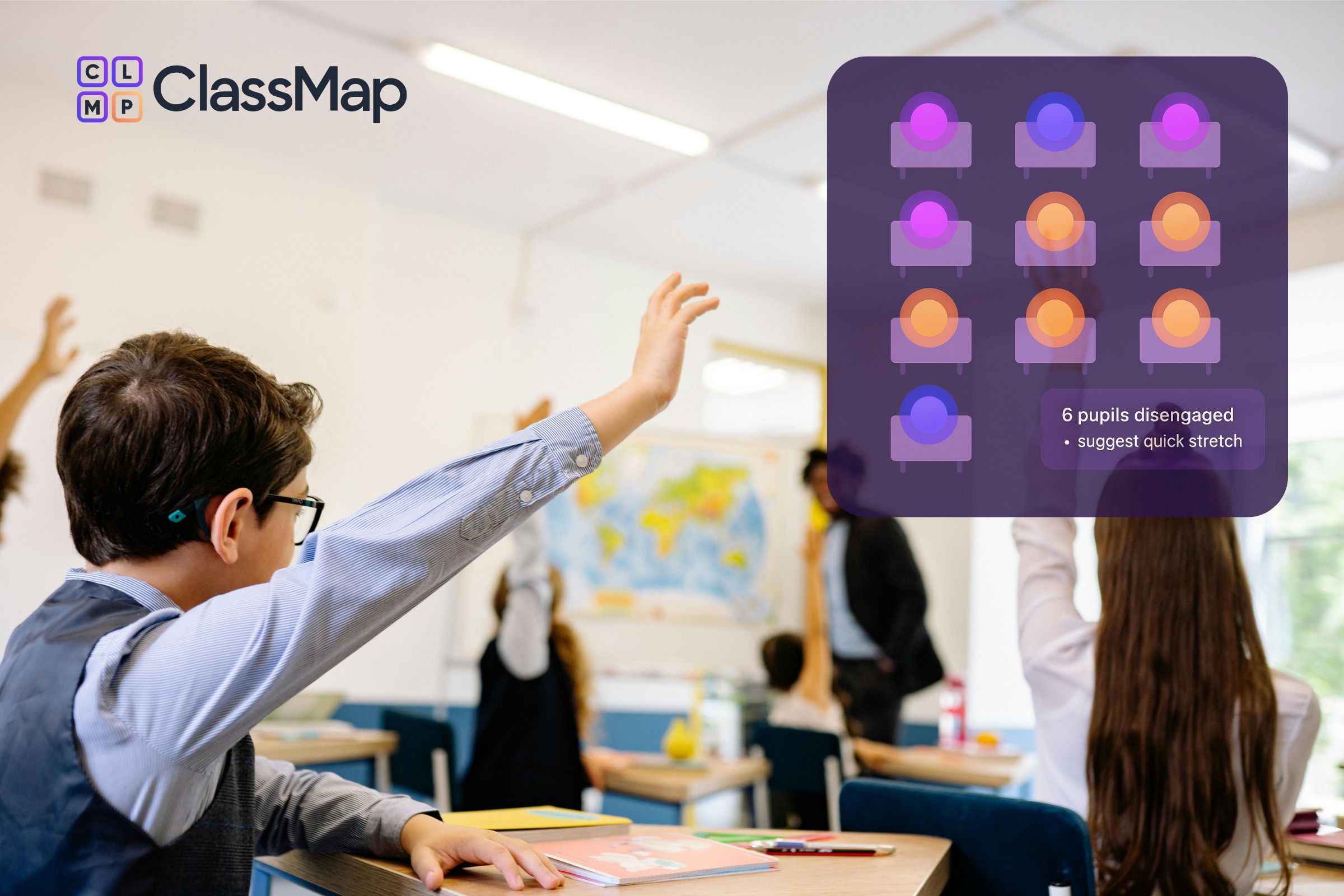Seeing the unseen: How real‑time insights help teachers tackle hidden student disengagement
“By the time I realise a pupil has drifted off, they’ve often been gone for days and I’m only just catching up.” —Laura I., Secondary English Teacher

1. Engagement lives in micro‑moments
Classroom engagement isn’t a single datapoint. It hides in eye contact that flickers away, a pen that stops moving, shoulders that slump. During a busy 50‑minute lesson, even the most attentive teacher can’t track 30 students’ signals at once.
Recent numbers confirm teachers’ intuition:
- 46 % of teachers say student engagement has declined since 2019 (marketbrief.edweek.org).
- One in four pupils disengage after moving from Year 6 to Year 8, with enjoyment scores halving during the transition (theguardian.com).
- Parents working from home has fuelled persistent absence; 25 % of secondary students now miss at least a day every fortnight (theguardian.com).
2. Post‑COVID classrooms: A new baseline for attention
Teachers report five big shifts since 2020:
- Shorter focus windows—many pupils tune out after 10‑15 minutes.
- Higher baseline anxiety and “camera fatigue” from years of remote learning.
- Phone and smartwatch distractions creeping back into lessons.
- Wider engagement gap—high flyers are more engaged, struggling pupils further behind.
- Social‑emotional needs outweighing academic questions more often than not.
Those lived observations match national data: 26 % of school leaders list “lack of focus” as the No. 1 barrier to learning—above behaviour and attendance (marketbrief.edweek.org).
3. The hidden cost for teachers: Invisible work & burnout
Behind every lesson plan is a mental checklist: Who looks lost? Who’s zoning out? Who’s anxious? That cognitive load rarely appears on timetables, yet:
- 44 % of K‑12 staff feel burned out “very often or always” (gallup.com).
- UK teachers still put in 54‑hour weeks on average, with up to 11 hours on data and admin tasks alone according to 2024 workload studies (eis.org.uk).
- Only 1.5 % of teachers say they’re unaffected by work stress; a third feel stressed most of the time (theguardian.com).
4. Making the invisible, visible – Enter ClassMap.io
ClassMap is a calm AI assistant that surfaces engagement and mood in real time without adding to teachers’ burden. Here’s what it does in the background:
- Monitors live engagement.
- Flags silent drops.
- Maps hot‑spots in seating layouts.
- Generates student well‑being reports with mood & participation trends.
- Suggests smart seating moves and micro‑interventions grounded in data.
Teachers stay in full control; the AI simply shines a light where attention is needed.
5. From guesswork to action: Five tiny, timely interventions
When disengagement is spotted during the lesson, fixes can be light‑touch and immediate:
- Quick stretch / brain break when the class engagement meter dips.
- Redirect a over-chatty cluster before off‑task chatter snowballs.
- Silent check‑in note to a student with repeated low mood indicators.
- Swap peer partners so a struggling pupil sits with a supportive buddy.
- Revisit instructions if data shows multiple “confused” taps in a row.
6. Why real‑time matters
Traditional engagement surveys are retrospective; teachers need prompts in the moment when a child can still be re‑engaged. Real‑time nudges turn invisible drift into visible data, so support happens the same day—not at the next grading period.
7. Looking forward: A classroom where no one slips through
Engagement will never become a simple number, but it can become visible. With discreet AI assistance:
- Teachers reclaim minutes of instruction instead of firefighting.
- Leaders gain live dashboards instead of waiting for half-term reports.
- Pupils feel noticed sooner, boosting belonging and reducing absenteeism.
- The “invisible work” of scanning 30 faces is shared—with an assistant that never tires.
“It’s like having an extra pair of eyes that never judge and always have the class’s best interest at heart.” —Laura I.
Ready to see the unseen in your own classroom? Explore ClassMap.io →
Book a 15-min walkthrough, see your own engagement data live. Book Demo →